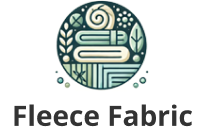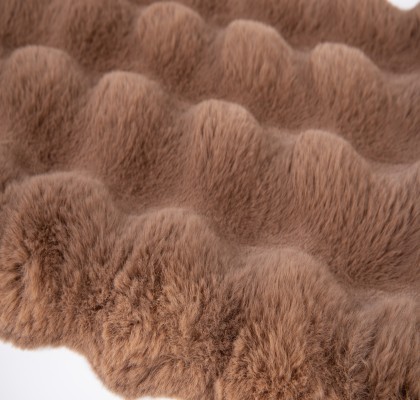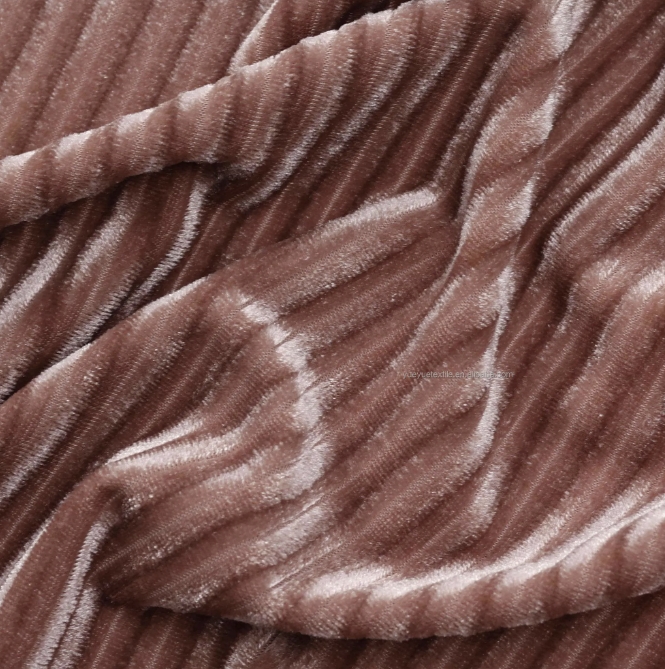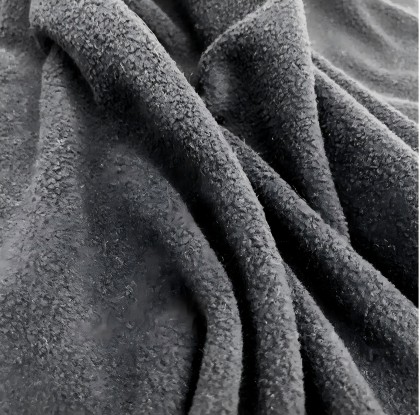A Comprehensive Guide for Textile Buyers, Designers, and Manufacturers
In textiles, which is constantly growing and changing, the right fabric can really set a product apart. If you are dealing with fashion design or textile purchasing, or are involved in manufacturing home goods, knowledge about the materials would give you an essential edge. Among the most popular soft fabrics are fleece and flannel—warmth-loving, comfortable, durable fabrics that usually take on quite a bit of responsibility in our closets.
Although they may look or feel similar at first glance, fleece and flannel fabrics are fundamentally different in their composition, construction, performance, and applications.
What Is Fleece Fabric?
FLEECE is a popular synthetic fabric that is very commonly used in the vast majority of households for blankets as well as throws. It is characterized by its very soft touch and warm properties. The warmth characteristic of fleece results from its napped surface, which traps body heat when worn as clothing. Due to these characteristics (warmth), it is often compared to wool. However, in reality, there is little similarity between fleece and wool.
FLEECE Fabric means “sheep wool,” but modern fleece isn’t what it sounds like. Fleece is a highly popular synthetic material adopted by most families for blankets and throws, etc. Because it’s so soft to the touch and warm when used, it has become increasingly popular within households everywhere. The reason fleece fabrics are warm is that they have a napped surface; this feature enables them to trap body heat when garments made out of it are worn. Because of these characteristics (warmth), people compare it with wool; however, in reality, there exists little similarity between the two materials.
FLEECE The word ‘fleece’ literally means ‘sheep wool.’ But modern fleece doesn’t come from sheep. It’s quite a popular synthetic material embraced by almost every family for making blankets, throws, etc., because it’s so soft on skin and warm when used, it has become sensational within households everywhere! The reason why fleece fabrics are warm is that they have a napped surface; this feature enables them to trap body heat when garments made out of them are worn! Because of these characteristics (warmth), people compare it with wool; however, in reality,y there exists little similarity between both materials.
FLANNEL A general term referring to fairly soft woven fabric normally made from carded wool or spun cotton threadings usually equal in thickness with slight variations across the width direction called nap; surfaces may be either left smooth or bristled into which famous versions such as tartan present themselves something more uniquely recognizable than plain colors not only utilized for men’s shirts but also women’s blouses, jackets, skirts,
Fleece is a synthetic fabric, mainly made from polyester fibers, although it can be mixed with spandex, viscose, or cotton to provide general elasticity or comfort. Made by a knitting process, fleece is known for its softly brushed surface, which gives it a plush texture pretty close to wool- hence the name.
HonryFleece focuses on top-notch fleece making through modern manufacturing steps. With an annual capacity exceeding 2 million tons, we provide all kinds of coral fleece to spandex-included versions, giving warmth without heaviness.
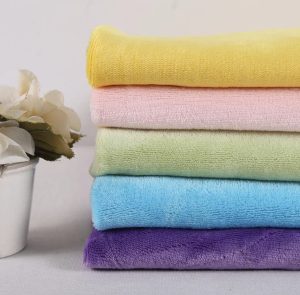
Main Qualities of Fleece:
- Artificial source (mainly polyester)
- Trying texture for warmth
- Great moisture-wicking abilities
- Light yet insulating
- Dries fast and is simple to care for
- Does not shrink or wrinkle easily
What Is Flannel Fabric?
Flannel fabric is usually a woven fabric made from natural fibers, most often cotton or wool. It can also be mixed with synthetic fibers to add strength or stretch. Flannel is recognized for its soft, napped finish on one or both sides; this results from brushing the fabric after it has been woven.
Flannel is the one fabric that finds its way across casual apparel, home textiles, and winter wear. It is not stretchy like fleece; it feels more real, more breathable.
Flannel would offer these key features:
- Natural fiber base (Cotton, Wool, or Blends)
- Surface – Napped, softly
- Breathability – Excellent
- Generally heavier than fleece
- Absorbs moisture rather than wicking it away
- Tends to shrink after washing if not pre-shrunk
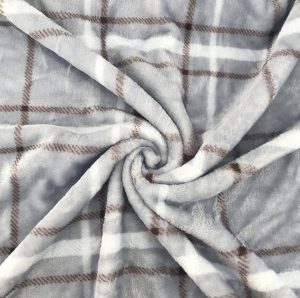
Comparison Table: Fleece vs. Flannel
| Feature | Fleece | Flannel |
|---|---|---|
| Fiber Type | Synthetic (Polyester) | Natural (Cotton/Wool) |
| Weave Type | Knit | Woven |
| Texture | Soft, plush, brushed | Soft, napped (brushed) |
| Warmth | High insulation | Medium insulation |
| Moisture Management | Wicks moisture away | Absorbs moisture |
| Breathability | Moderate | High |
| Stretch | Spandex or stretchy | Limited stretch |
| Durability | High | Medium |
| Shrinkage | NoneIt can | n shrinks if not treated |
| Eco-friendliness | Less biodegradable | More biodegradable |
| Drying Time | Fast | Slow |
| Common Uses | Jackets, sportswear, blankets | Shirts, pajamas, bedsheets |
Flannel Production at HonryFleece:
- Raw Material: Cotton or wool (100%)
- Method: Weaving followed by napping on one side
- Finishing: Dyeing only
- Customization: Textures, weight, colors, flame-retardant options
Fleece Production:
Raw Material: Cotton, wool, or blends
Method: Twill or plain weave
Finishing: Brushing to raise the nap, dyeing, and softening
Customization: Patterns (especially plaid), single/double napped surfaces
Flannel is normally dyed with the use of conventional water-based systems, which may mean more water usage unless facilities are modernized to sustain proper sustainability.
Which Fabric Is Warmer?
Fleece is usually warmer than flannel. The reason fleece is warmer is that it traps air between fibers, and this insulation retains body heat. Fleece is great for extreme cold, activewear, and outside garments.
Flannel can regulate temperatures better and is applicable for mild cold climates or indoor wear. If breathability is a key concern—say, for a pajama set or bed sheet—flannel is often the better choice.
Comfort and Feel
Both fabrics are comfortable in different ways:
- Fleece feels plush and thick, offering a “cocoon” effect that many users find luxurious.
- Flannel is as soft and smooth as any other fabric, especially if it is made from combed cotton; it feels more breathable against the skin.
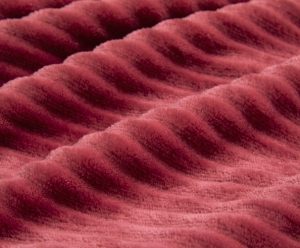
Sustainability & Environmental Impact
We at HonryFleece are committed to reducing our environmental impact. Our wash-free dyeing production line does not use traditional water-based dyeing, hence reducing water waste plus energy usage.
From the fiber point of view:
- Fleece is made from synthetic fibers, so it is less biodegradable, but can be made from recycled polyester (rPET).
- Flannel is cotton or wool-based, so it is more biodegradable, but it uses more water and pesticides in farming unless organic sources are used.
Verdict: If made with recycled materials and eco-friendly processes (as at HonryFleece), fleece can be just as sustainable as flannel, if not more.
Typical Uses
Fleece:
- Activewear (jackets, vests, hoodies)
- Baby blankets and toys
- Home textiles (throws, cushion covers)
- Pet beds
- Camping gear
Flannel:
- Pajamas and nightwear
- Button-up shirts (especially in plaid)
- Bed sheets and pillowcases
- Lightweight jackets
- Tablecloths and craft uses
At HonryFleece, we provide an all-in-one solution for fleece and flannel fabrics – custom dyeing, pattern design, and rapid delivery for domestic and international orders.
Which Fabric Should You Choose?
Choose fleece if:
- You need maximum warmth and softness
- Your product is for cold outdoor environments
- You want quick-drying, easy-care cloth
- Give me stretch and durability
Choose flannel if:
- You want a natural fabric that the application is suitable for indoor or mild winter use
- Making shirts, sleepwear, or bed linens
- Eco-conscious sourcing is a key value
HonryFleece: Your Trusted Partner in Fleece & Flannel Supply
As a major producer of top fleece and flannel cloth, HonryFleece has spent years mastering the study and skill of soft fabrics. Since our start in 2015, we have become a full textile business group with 15 divisions and over 100 skilled workers.
Why Us?
- 2000000 tons yearly output capacity
- In-house coloring and finishing facilities
- Oeko-Tex® and Detox-approved methods
- Choice of options for design, color, GSM, and width
- Quick reply and fast delivery
- Excellent one-stop client care
Whether you are looking for fleece to make jackets or flannel for bedding, we can offer fabrics that have been rigorously tested, certified, and custom-developed to meet your needs exactly.
Final Thoughts
At first glance, fleece and flannel may seem pretty similar; however, they differ in fiber content as well as warmth, texture, moisture handling, and sustainability—properties that make each suited for particular applications. Priorities regarding thermal performance, breathability, eco-friendliness, or tactile comfort will dictate the choice between the two.
At HonryFleece, we believe quality starts with the right fabric. It is our mission to help you deliver excellence to your customers through top-tier textiles that are comfortable, imitable in performance, and sustainable.
Contact us today to learn more about our full range of fleece and flannel options, and see how we can help bring your vision for textiles to life.
